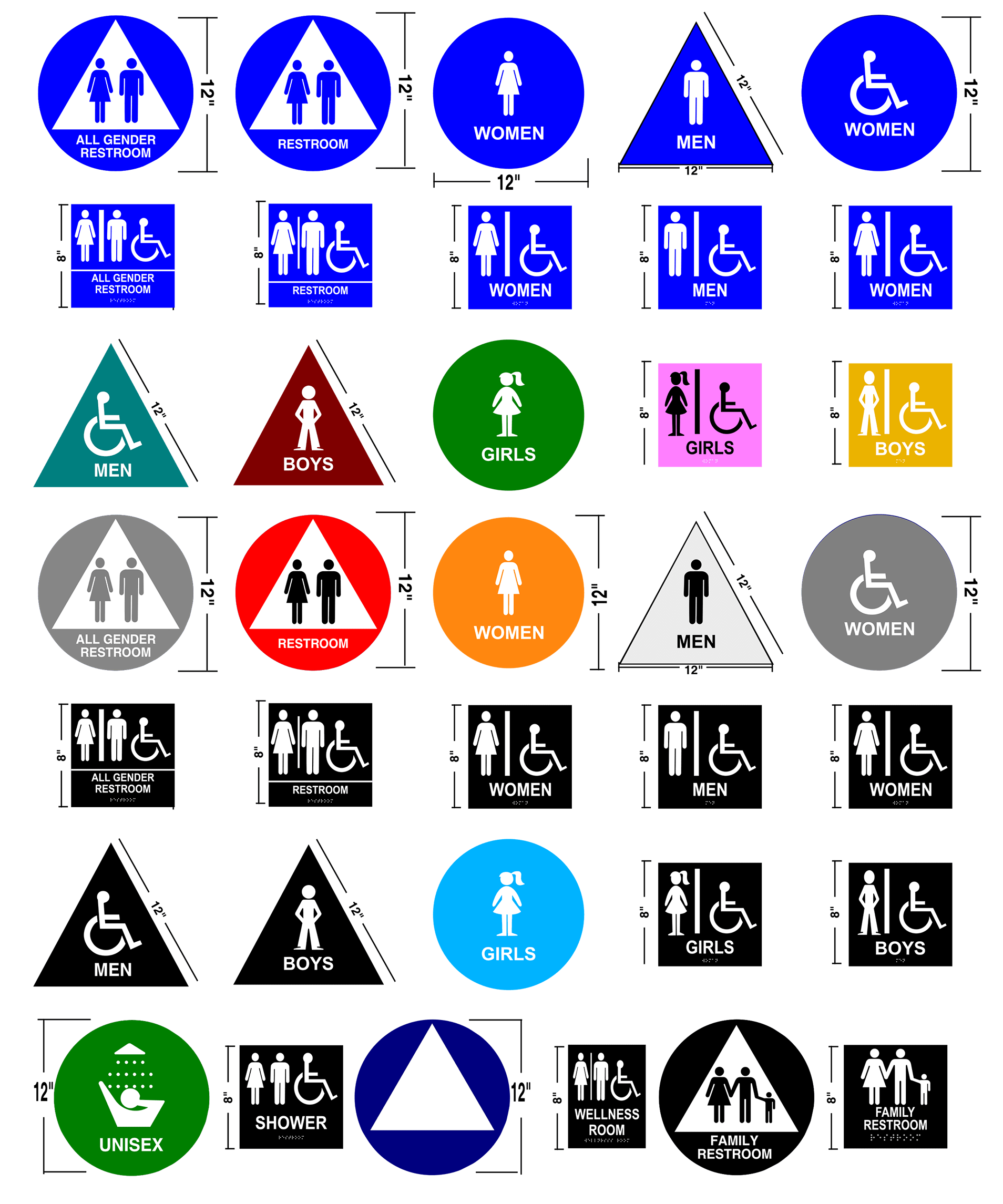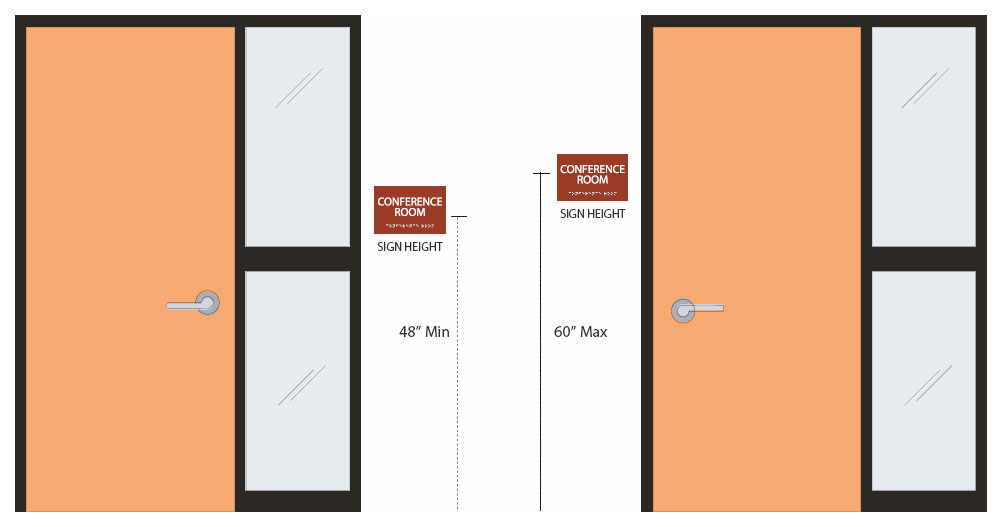The Advantages of Using Top Notch ADA Signs in Your Organization
The Advantages of Using Top Notch ADA Signs in Your Organization
Blog Article
Checking Out the Secret Functions of ADA Indications for Improved Ease Of Access
In the realm of accessibility, ADA signs serve as quiet yet effective allies, making sure that areas are navigable and comprehensive for individuals with disabilities. By incorporating Braille and responsive aspects, these indications break obstacles for the aesthetically impaired, while high-contrast shade systems and understandable font styles accommodate diverse aesthetic demands. Their strategic placement is not arbitrary but rather a calculated effort to help with seamless navigating. Yet, past these functions exists a much deeper story regarding the development of inclusivity and the ongoing dedication to producing equitable spaces. What a lot more could these indicators signify in our quest of universal access?
Importance of ADA Conformity
Guaranteeing conformity with the Americans with Disabilities Act (ADA) is important for cultivating inclusivity and equal gain access to in public areas and offices. The ADA, enacted in 1990, mandates that all public centers, companies, and transport services fit people with handicaps, guaranteeing they enjoy the exact same legal rights and possibilities as others. Conformity with ADA criteria not just fulfills legal obligations however likewise boosts a company's reputation by demonstrating its commitment to diversity and inclusivity.
One of the key aspects of ADA conformity is the execution of easily accessible signs. ADA signs are designed to ensure that individuals with handicaps can quickly navigate via areas and buildings.
In addition, sticking to ADA policies can mitigate the threat of prospective fines and lawful repercussions. Organizations that fall short to follow ADA guidelines might deal with fines or claims, which can be both financially challenging and harmful to their public picture. Hence, ADA compliance is indispensable to fostering a fair environment for every person.
Braille and Tactile Elements
The incorporation of Braille and responsive elements into ADA signage symbolizes the concepts of access and inclusivity. It is commonly placed underneath the equivalent message on signage to guarantee that individuals can access the information without visual aid.
Tactile aspects expand past Braille and include increased signs and personalities. These parts are designed to be noticeable by touch, permitting people to identify area numbers, restrooms, leaves, and other important locations. The ADA sets certain guidelines regarding the size, spacing, and positioning of these tactile aspects to enhance readability and guarantee consistency across various settings.

High-Contrast Color Design
High-contrast color pattern play a pivotal role in boosting the visibility and readability of ADA signs for people with aesthetic impairments. These systems are important as they make best use of the distinction in light reflectance between message and background, making sure that indications are easily noticeable, also from a distance. The Americans with Disabilities Act (ADA) mandates using particular shade contrasts to accommodate those with limited vision, making it a critical aspect of conformity.
The effectiveness of high-contrast shades exists in their capability to attract attention in different lighting conditions, consisting of dimly lit atmospheres and locations with glare. Generally, dark message on a light history or light text on a dark background is employed to achieve ideal contrast. For example, black text on a yellow or white history offers a plain visual distinction that aids in quick acknowledgment and comprehension.

Legible Fonts and Text Size
When taking into consideration the layout of ADA signs, the selection of readable fonts and appropriate text dimension can not be overstated. These elements are essential for ensuring that indicators come to individuals with visual impairments. The Americans with Disabilities Act (ADA) mandates that fonts need visit the site to be sans-serif and not italic, oblique, script, extremely ornamental, or of uncommon kind. These needs help make sure that the message is easily readable from a distance and that the personalities are distinct to varied audiences.
According to ADA guidelines, the minimum message height must be 5/8 inch, and it should raise proportionally with checking out distance. Uniformity in text dimension adds to a cohesive aesthetic experience, helping people in navigating settings efficiently.
In addition, spacing between lines and letters is essential to readability. Sufficient spacing prevents personalities from appearing crowded, improving readability. By adhering to these requirements, developers can substantially boost ease of access, ensuring that signage offers its desired purpose for all people, regardless of their visual abilities.
Reliable Placement Strategies
Strategic positioning of ADA signs is crucial for maximizing accessibility and ensuring conformity with lawful requirements. ADA guidelines specify that indicators must be installed at a height between 48 to 60 inches from the ground to guarantee they are within the line of sight for both standing and seated individuals.
Additionally, indicators should be placed nearby to the latch side of doors to permit easy recognition before entrance. Consistency in indication placement throughout a center enhances predictability, minimizing confusion and enhancing overall individual experience.

Conclusion
ADA signs play a vital function in advertising accessibility by incorporating attributes that deal with the demands of people with impairments. Including Braille and responsive aspects makes certain essential information comes straight from the source to the visually impaired, while high-contrast color design and understandable sans-serif typefaces boost exposure across various lights conditions. Efficient placement strategies, such as suitable placing elevations and strategic areas, better assist in navigating. These components jointly cultivate an inclusive atmosphere, highlighting the relevance of ADA conformity in making certain equivalent accessibility for all.
In the world of access, ADA indicators offer as silent yet powerful allies, making certain that rooms are inclusive and accessible for people with impairments. The ADA, enacted in 1990, mandates that all public facilities, companies, and transportation services suit individuals with disabilities, guaranteeing they her explanation delight in the same civil liberties and chances as others. ADA Signs. ADA indications are designed to make certain that individuals with impairments can conveniently navigate through areas and structures. ADA guidelines stipulate that indicators need to be placed at an elevation in between 48 to 60 inches from the ground to ensure they are within the line of sight for both standing and seated individuals.ADA signs play an essential function in advertising availability by integrating functions that deal with the demands of individuals with disabilities
Report this page